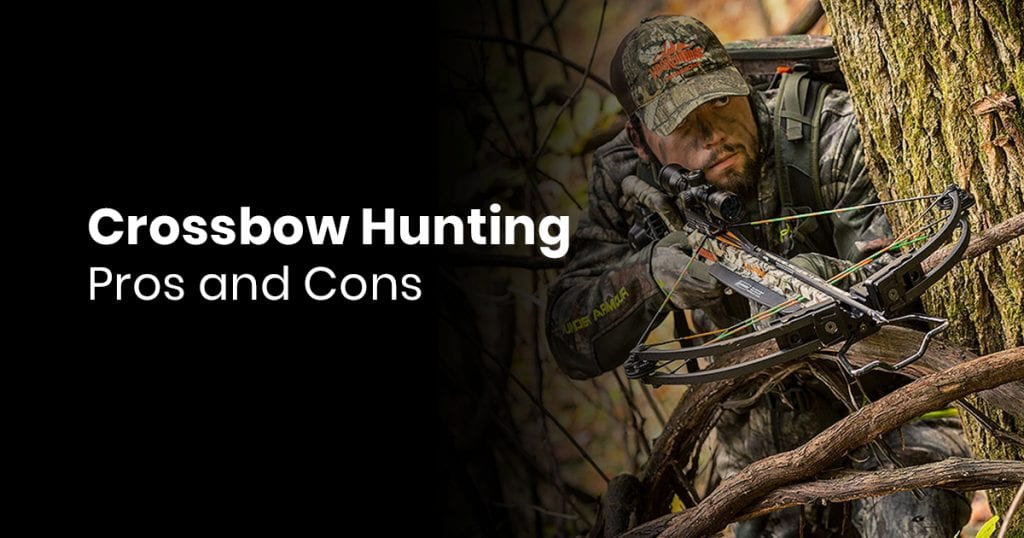Crossbow hunting is becoming an increasingly popular hunting method during the archery season.
It allows big game hunters, such as black bears and deer hunting to take advantage of shooting distances similar to firearms, without loud noises.
Spooking your target is never a great outcome when your hunting days are limited.
Compound Crossbows hunting gives you more opportunities to hit your target, and have a great day in the field.
Crossbow hunting isn’t for everyone, however. It is a high powered way of shooting, and in some states, the crossbow is actually classed as a firearm, not as a bow.
Many archers prefer the traditional way of bowhunting and will shy away from crossbow use.
However, the crossbow has become a useful tool for hunters that are first time, handicapped or older, because they are easy to carry and are easier to shoot.
So how do you know if crossbow hunting is the sport for you?
Well, there are a number of things you need to consider before you start crossbow hunting.
First, what are the laws pertaining to crossbow hunting, in the places where you hunt most often?
If crossbow hunting is limited to times or seasons that don’t work for you, you might want to stick with traditional bow hunting instead.
Second, what game animals are you most interested in hunting.
If you love hunting waterfowl, many states do not allow crossbows for waterfowl season, so this may be a deciding factor.
If you love shooting big game, crossbow hunting might be perfect.
Third, crossbow hunting requires a completely different technique than shooting traditional standard bows.
You’ll have to spend some good time practicing before you can shoot well.
If you don’t want to spend this time, stick with what you already know.
Finally, while many states do consider a crossbow a firearm, they still don’t have the same power or range as a rifle.
This can be a deciding factor for hunters that want to keep their distance from game, as a way of improving their hunting success.
So, we’ve just mentioned some pros and cons of hunting with a crossbow.
However, these aren’t the only ones.
We’ve compiled a few more in the sections below, to help you make the best choice of whether a crossbow is the right hunting tool for you.
Is crossbow hunting legal?
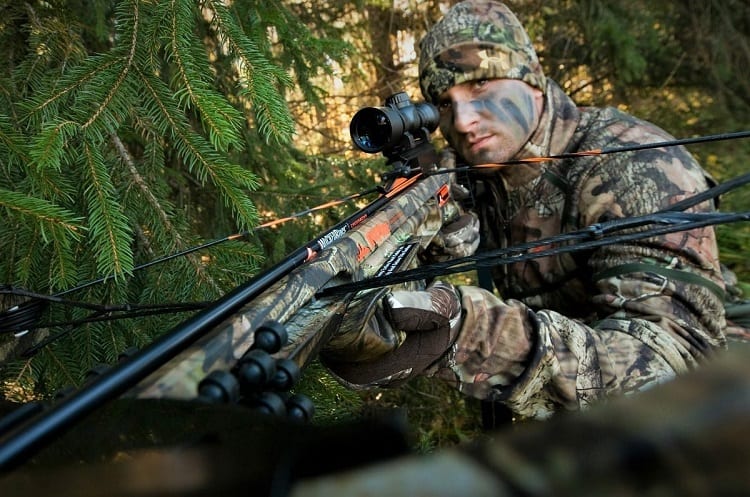
Under federal firearms regulations, the use of crossbows are considered legal and can be owned by any individual that is capable of using a said firearm during gun season.
The purchase of crossbows for the long time may have varying requirements from state to state, and there may be licensing requirements depending on where you live.
The only state in the US that considers crossbow hunting illegal is the state of Oregon.
Oregon has very stringent firearms regulations and does not allow the hunting of any type with a crossbow.
Oregon has such a firm stance on crossbow hunting, that they do not even allow disabled or handicapped hunters with a special permit to use a crossbow as an alternative to compound and longbows.
Most states have limitations when crossbows can be used for hunting of different types of game legally for the whole season.
Using your crossbow as a hunting tool outside of these times can result in hefty fines, loss of hunting licenses, confiscation of hunted animals, and in some cases jail time.
Any of these options can really ruin a great hunting trip, so it’s important that you familiarize yourself with local crossbow hunting rules, before you are in the field.
Here are some common variations to crossbow hunting laws that you might find from state to state:
- Crossbows allowed only during firearm seasons: Some states that consider crossbows as powerful as rifles or shotguns will only allow crossbow hunting during firearm seasons. In these states, bow hunting seasons are limited to compound or longbow hunting only.
- Crossbows allowed only during archery seasons: This is not very common either, but there are states that consider crossbows in the same category as a compound, recurve and longbows, so allow their use during archery seasons only.
- Crossbows allowed only for certain game animals: This is more common across state lines. Many states will allow you to hunt with a crossbow, during firearm seasons, for specific game animals only. One of the most common limitations to game animals that cannot be hunted with a crossbow is waterfowl.
- Training required before getting a license: Some states will only allow you to hunt with a crossbow after you have taken a state-approved class on crossbow hunting.
- Variances for disabled, elderly or handicapped hunters: In some states, the only people that can hunt legally with a crossbow are those hunters that are disabled or are over a particular age. There may also be limitations for these hunters in regards to which months they are allowed to hunt with their crossbow.
Our best advice when it comes to the legality of using your crossbow is to do your research.
It is never a good idea to cross state lines to crossbow hunt, without knowing what is legal.
Regular Bow vs Crossbow Hunting
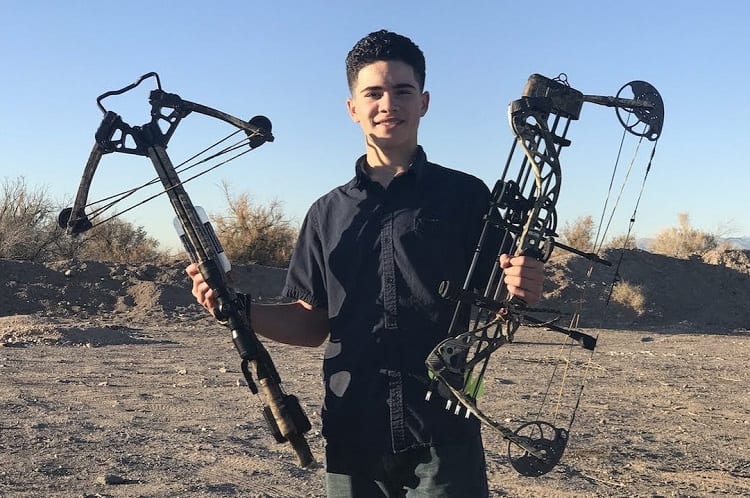
The real difference between bow hunting and crossbow hunting lies with the equipment that you are using, and the power that these two pieces of crossbow equipment will provide for you.
Traditional bows, whether they are compound, recurve or longbows, are also referred to as vertical bows.
These bows are generally long in length and are strung from top to bottom.
The user of a traditional bow set up is limited to hunting from a standing position on the ground or a seated position in a stand.
Traditional bows generally require a substantial amount of strength to pull back, aim and shoot an arrow at a target practice.
This necessary strength can be a limiting factor for hunters that are young, older or have a disability.
The range of the traditional bow is generally much smaller than that of the crossbow.
However, bow range can be improved with practice and a good understanding of conditions, and the equipment being used.
For most hunters using a traditional style bow, their effective hunting range of an animal like a white-tail deer is in the area of 15 to 25 yards.
This means that the hunter has to be fairly close to their target to make an effective shot.
Crossbows are nearly as old as traditional bows but have had a much darker history.
While the traditional bow and arrow were originally used by hunters to kill food, the crossbow was developed as a weapon of war.
The first of these “tools” were used in Europe and China between the 1st and 4th centuries AD.
Crossbows were weapons of war and were intended to assist soldiers at making quick, accurate shots from horseback.
Today, the crossbow is still used in limited application as a weapon of war, however, it has become a popular tool for the modern hunter.
The crossbow is also known as the horizontal bow, as it is held more like a firearm, and has features similar to a firearm.
Crossbows use mechanical means of firing an arrow or bolt, though these are not combustible like with a firearm.
The mechanical nature of the crossbow brings some distinct differences in sound, travel distance, and accuracy, from that of the traditional bow.
The mechanical nature of the crossbow can also make it a good alternative hunting tool for younger hunters, senior hunters or hunters with disabilities.
Hunting range is the most significant difference between the crossbow and the traditional bow.
Most crossbows have a maximum shooting range of around 300 yards.
This can be comparable to many rifles, however, the maximum shooting range doesn’t equate to the effective shooting range.
For many practiced and experienced crossbow hunters, the effective shooting range is in the area of 35 to 100 yards, depending on the equipment used and the comfort level of the hunter.
One distinct disadvantage of crossbow hunting is that in many states there are far more limitations to hunting seasons, allowable game and where you can hunt with a new crossbow.
This can be a deterrent for some hunters that may want to consider crossbow hunting, especially if the state they live in, has strict limitations on where, when and what can be hunted with a crossbow.
What is the advantage of crossbow hunting?
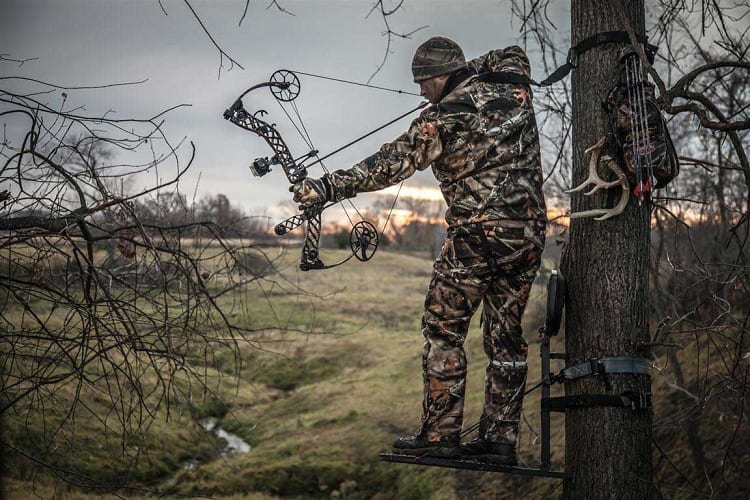
There are a few factors that many hunters consider advantages to crossbow hunting.
However, while these are seen as advantages to some hunters, choosing to hunt with a crossbow is a matter of preference and comfort.
Ease of use
Using a crossbow, for many hunters is a much simpler task.
The mechanical nature of the tool, with pulling cranks, and triggers like a firearm, using a crossbow can be a much more convenient and simple process than waiting around with your traditional bow.
The more mechanical features of the crossbow also, depending on the model of bow you’ve purchased, allow you to load your bow and wait.
Traditional bows demand that load your arrow just as you are ready to take a power stroke shot.
This isn’t the case with all models of the crossbow.
You can load, and wait patiently for the perfect shooting opportunity.
This ease of use also makes using a crossbow easier for individuals with limited mobility or strength.
Varying Hunting Positions
You aren’t limited to standing or sitting in a stand with your crossbow.
Of course, these positions do give you the best hunting advantages and stability when shooting.
However, the crossbow a simple weapon can also be shot from a prone position which can have an advantage in some hunting situations.
Quieter Shots
Many modern crossbows come with sound-dampening features that quiet the strings when the arrow or bolt is released.
Being able to shoot from a close distance, without spooking your target animal is a distinct advantage that comes with hunting with a crossbow, compared to other types of bows, such as the modern compound bow.
More Power
An effective kill shot generally comes from more power and higher rates of kinetic energy at higher speeds.
Because crossbows shoot arrows at a greater speed, and can more effectively shoot a heavier arrow, they have more power and are able to maintain more kinetic energy as the arrow moves through flesh.
This means that you have a better rate of success when you hunt with a crossbow.
Longer Range
This is clearly the greatest advantage of using a crossbow over a traditional style bow.
Thanks to the mechanical nature of the tool, most crossbow hunters can expect to increase their maximum effective hunting range as much as 50 yards.
There are some caveats to that increase.
First, this does take practice and building a good level of comfort with your equipment.
This also means that you need to be using the right sized crossbow for your shooting style.
Second, you need to have the right arrows and broadheads for the game you are hunting, and a strong understanding of how crossbow arrows travel depending on the type of broadhead that you’ve selected.
Finally, you need to know how wind, humidity and other environmental conditions will impact the travel distance of your arrow.
What game can you hunt with a crossbow?
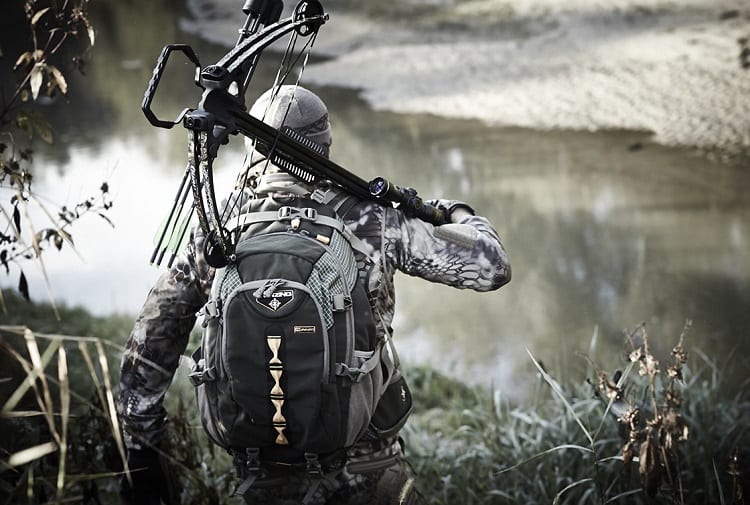
In reality, there isn’t any type of game that you can’t hunt with a crossbow.
However, there are some types of games that you may want to avoid hunting with a crossbow, and there are generally limitations from state to state regarding small game animals that can be hunted with a crossbow.
Our best suggestions about what you hunt with a crossbow are to understand local hunting rules.
While most states allow crossbow hunting of some type, the limitations, and timing of when you can hunt and what you can hunt vary widely from state to state.
It is important to point out, once again, that the only state where crossbow hunting is specifically banned in Oregon.
Please be respectful of this law.
Oregon’s hunting laws are some of the most stringent in the nation and they come with equally stringent penalties that can range from fines to jail time.
Many hunters find that there are not as many limitations on what you can hunt, but rather where and when you can crossbow hunt.
Many states allow crossbow hunting only during certain times of deer, elk, or other large game seasons.
Some states allow crossbow hunting only during the times when rifle hunting is legal.
In Alaska, there are limitations on where certain game species can be hunted with a crossbow, and these areas are far more limited than where hunting with firearms or traditional bows can be used.
Rules aside, crossbow hunting is most often used for larger game species.
While many hunters do like to use a crossbow for hunting smaller game or waterfowl, the greatest advantage from crossbow hunting comes when you are tracking a big elk, moose or wild caribou.
Crossbows have become so effective when combined with the right arrow and broadhead that many hunters are now using them to hunt game like brown and grizzly bear, big game hunting.
How far can you shoot a deer with a crossbow?
We will once again, reiterate that there are two different distances that you need to consider when you are hunting with a crossbow.
The first is the maximum shooting range.
This is the maximum distance that your crossbow, according to the manufacturer can shoot.
For some higher power crossbows, this can exceed 350 yards.
However, this doesn’t mean that from 350 yards, you will have an effective shot.
This is simply the furthest that you can expect your crossbow to shoot under good conditions and with the right arrow and broadhead setup.
The more accurate way to gauge the distance that you can shoot a deer is to understand and determine your own effective shooting range.
For many hunters, this can be a disappointment initially, because for every crossbow hunter their effective hunting range will be substantially less than the maximum range noted on the crossbow packaging.
Determining your effective hunting distance, you will need to spend some quality time at the archery range.
You will need to try a variety of different combinations of bolts, pull weights, and broadheads to find what works best for you gives you the greatest accuracy combined with the most distance.
Once you’ve found the right combination, you can call this your effective hunting range.
For most crossbow hunters, with plenty of practice, the effective hunting range for deer is in the area of 35 to 100 yards.
This distance provides plenty of distance between you and your target and still allows you to have good accuracy and a strong kill shot.
Archery hunts with a crossbow has some distinct advantages and disadvantages.
While many hunters love using a tool that has the feel of a firearm but still feels more humane, it isn’t the right option for every hunter.
Before you run out and buy a crossbow for your next hunting trip, take some time to do your research, and maybe try some out at your local archery range.
This can make the difference between a great hunting experience and a day of frustration in the field.

